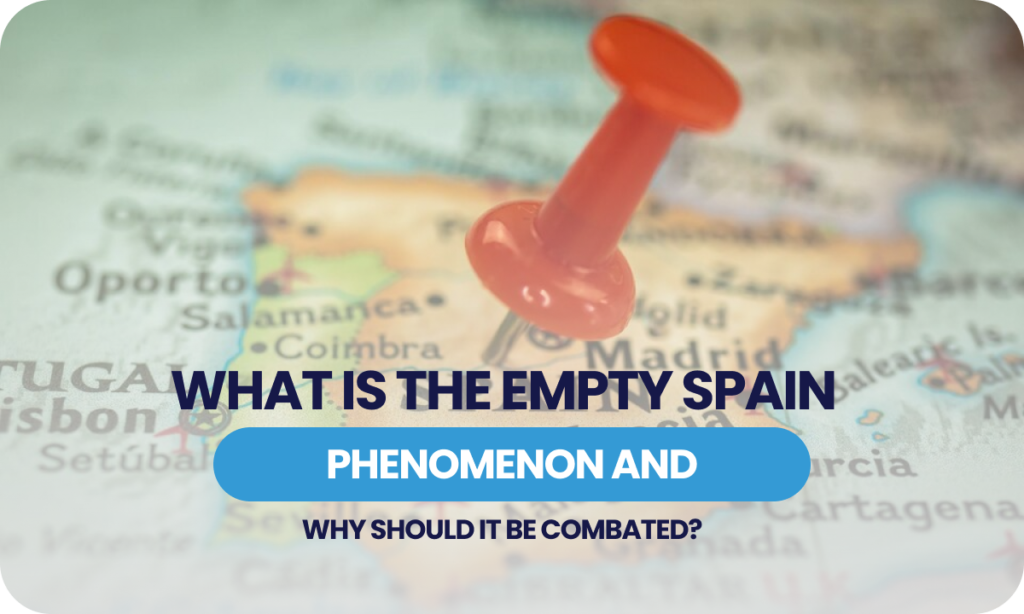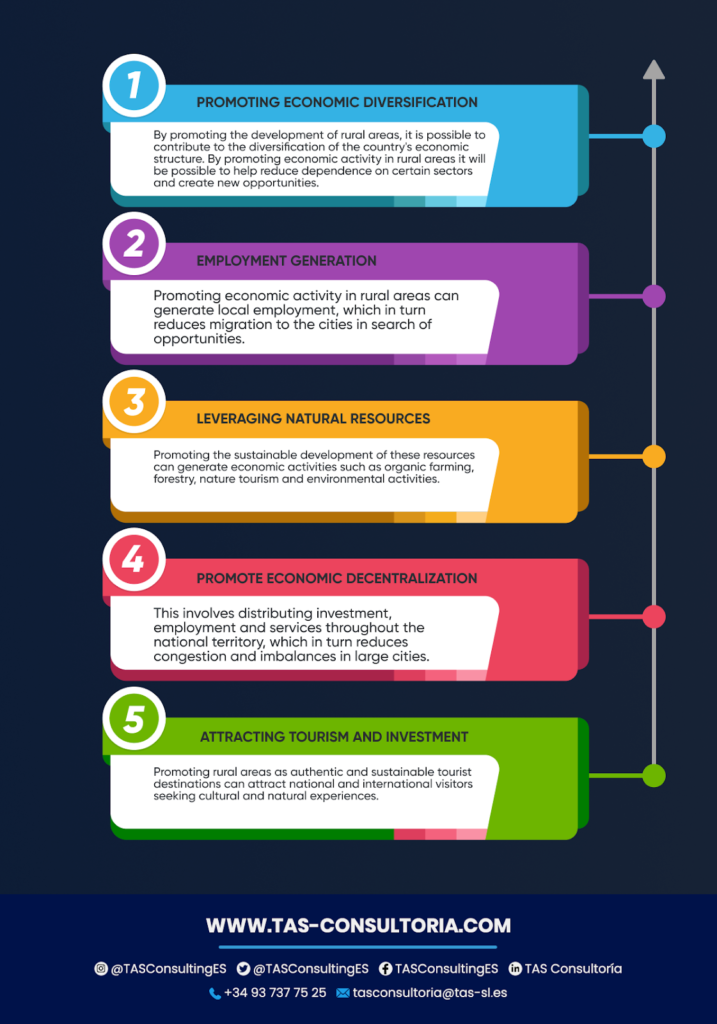
When we talk about the phenomenon of “empty Spain” we refer to the depopulation and aging of rural areas. But also the lack of services and opportunities in them. Faced with this, the country has created strategies to combat it and thus benefit the country’s economy. Do you want to know more about this phenomenon, how it affects companies and how to combat it? Stay to the end!
What is the Empty Spain phenomenon?
“Empty Spain” is a term used to describe the depopulation and aging of many rural areas in Spain. It refers to the trend of migration to large cities and the abandonment of rural areas.
Several factors have driven this phenomenon. First, the development of industrialization and urbanization in recent decades. This has led to a concentration of employment and services in urban areas, attracting young and working people.
As a result, many rural areas have experienced job losses and a lack of investment and economic development. In addition, changes in lifestyles and expectations have influenced migration to cities.
This is because young people seek opportunities for higher education, better paying jobs, access to health services and a higher quality of life. And this is generally associated with living in urban areas.
You may also be interested in: The road to digitization of the public sector in Spain
What is the background of Empty Spain?
The antecedents of this phenomenon date back to different historical periods, not to mention socioeconomic changes. The latter have affected the rural areas of Spain significantly.
That said, one of the key antecedents is the industrialization and urbanization that began in the 19th century and intensified during the 20th century. During this period, many rural areas lost population. People migrated to the cities in search of employment in the emerging industries.
This mass migration accelerated after the Spanish Civil War and during the Franco dictatorship. During the Franco dictatorship, industrial development concentrated in urban areas, leaving rural areas aside.
Regional development policy has also influenced Empty Spain. For decades, policies and measures have been implemented that favored economic growth and investment in the more developed regions. Especially in the center and on the coast. As a result, there is a lack of opportunities and basic services that drives migration to the cities.
Agricultural transformation has also had a significant impact on the rural exodus. Mechanization and modernization of agriculture have led to a reduction in the demand for agricultural labor. This has left many people unemployed in rural areas and contributed to depopulation.
In addition, the lack of adequate infrastructure in rural areas, such as roads, public transportation, health services and education, has limited opportunities. This has made these regions less attractive to live and work in.
What are the consequences of Empty Spain?
Empty Spain has a series of negative consequences for the growth and development of the country that are worth knowing. The main ones are:
- The aging population poses challenges of health care services, elder care and economic sustainability.
- Lack of investment and development can lead to deterioration of infrastructure, loss of basic services, and diminished quality of life.
In response to this problem, initiatives have been implemented to address the phenomenon of Empty Spain. These include policies to promote entrepreneurship and job creation in rural areas. As well as the improvement of infrastructures and basic services.
It also seeks to promote rural tourism and the protection of cultural and natural heritage. This will serve as a means to revitalize these areas and promote more balanced development throughout the country.
You may also be interested in: Spain Entrepreneurial Nation Strategy: what does it consist of?
5 steps to combat the Empty Spain phenomenon
Combating the “Empty Spain” phenomenon can have significant benefits for the country’s economy. Here are some reasons why tackling this problem can be beneficial:

What are the 7 plans for Digital Spain?
The Digital Spain Agenda is a government strategy to boost the country’s digital transformation. As a result, by doing so, it could take advantage of the opportunities offered by the digital economy and thus boost the country.
Thus, among the objectives of this strategy are:
- Improving connectivity
- Fostering digital talent
- Promoting the digitalization of companies and public administrations.
- Strengthening cybersecurity and
- Guarantee the digital rights of citizens.
To achieve these objectives, the government has designed seven specific plans to be developed between 2020 and 2025. All this with an investment of more than 70,000 million euros that seek to cover these seven plans:

These seven plans are an opportunity to improve the country’s competitiveness, growth, employment and social welfare. Not only that, they also enable us to meet the challenges of the ecological transition and recovery from the pandemic.
You may also be interested in: Know the safest autonomous communities in Spain
Do you already know about the Empty Spain phenomenon? Do you have a business idea that can contribute to counteract the effects of this phenomenon and favor the Spanish economy? Then, I invite you to contact us through tasconsultoria@tas-sl.es, where our professionals will advise you step by step to develop it.
We are experts in the creation of companies in very few steps. In addition, we have experience in tax, accounting, financial, digital transformation and more. With our knowledge, we will take your business idea to the next level. What are you waiting for? Schedule your personalized consultancy.




Your email address will not be published .
Required fields are marked with *